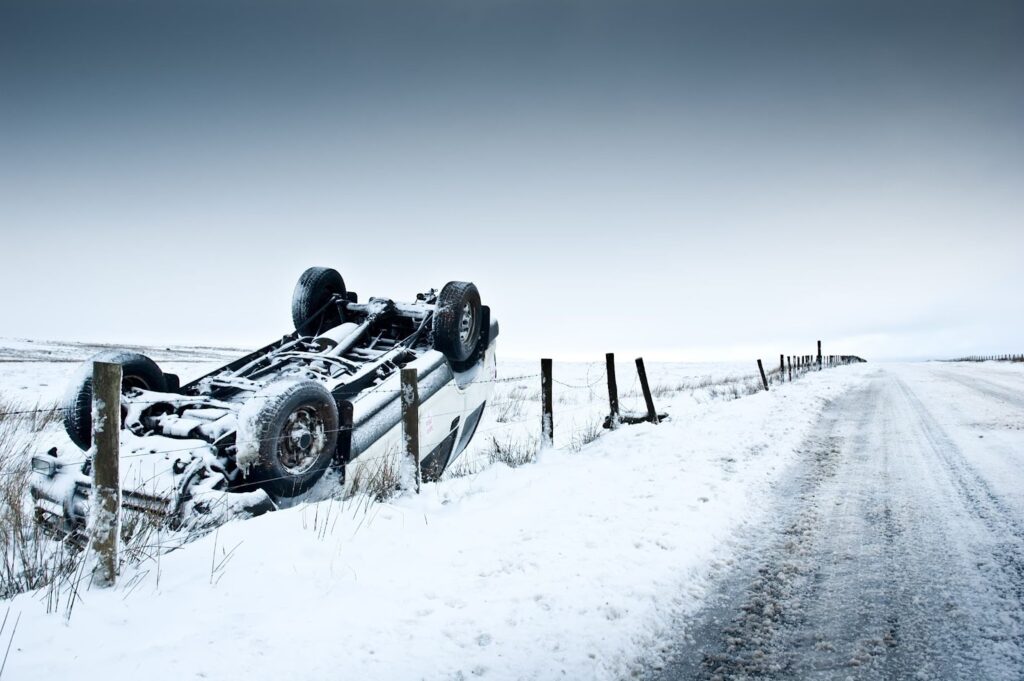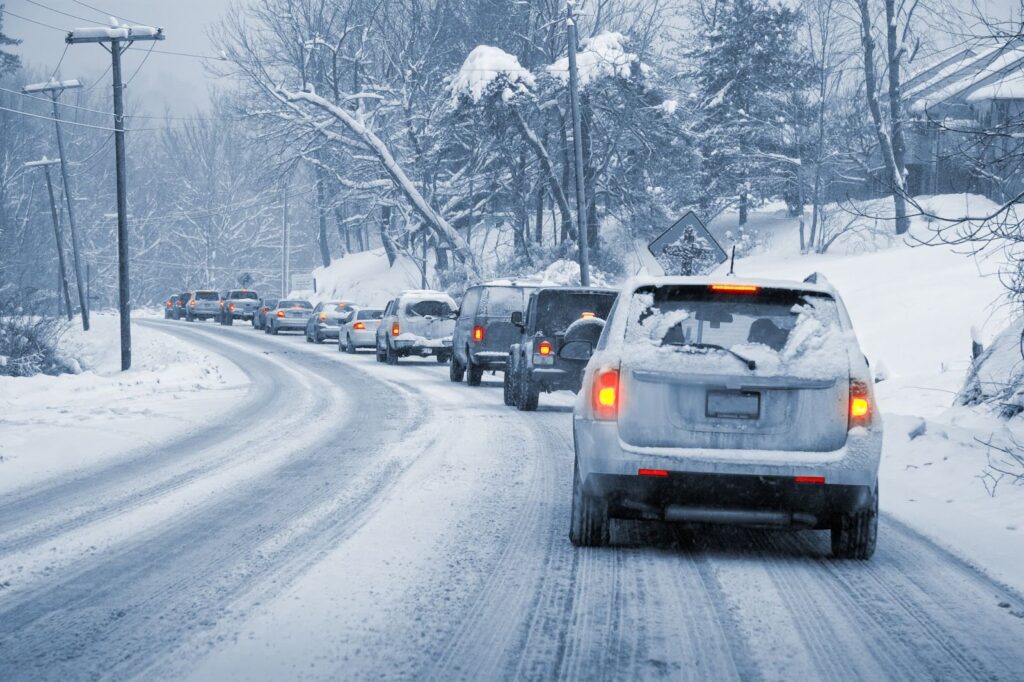Denver: 100-Car Crash After First Snowfall in Denver

The early November 100-vehicle car crash on one of Denver’s most populated highways southwest of Downtown was a scene like no other. On the morning of Friday, November 4th, just before 6:30 a.m., slick conditions from the overnight snowfall created the perfect storm for drivers.
As commuters were starting their day, icy and slick patches on the roadways caused several vehicles to lose control and block the road. Immediately after the first crash, dozens of vehicles began to pile up, causing a scene many described as being straight out of a movie.
As stranded drivers waited for help, many eventually left their vehicles as they waited for tow trucks to arrive. Police and emergency services were quick to respond, helping to bring order to a chaotic situation. The vehicles were all cleared just before noon, and the highway was opened for operation again.
While nearly 21% of all annual automotive crashes are related to poor weather, the victims in Denver’s 100-car pileup were lucky in that many were able to walk away with minor injuries. The vehicles of many drivers, on the other hand, were not so fortunate.
As with any situation, preparedness is key. Let’s take a look at what preventive measures you can take this season to prevent winter car accidents on Colorado’s roadways.
How to Prevent Accidents During the Snowfall in Denver
An ounce of prevention is worth a pound of cure when it comes to driving in Denver during the snowy winter months. While there is not much you can do about the weather, there’s plenty you can do as far as staying safe on the road. This winter, take care to practice these necessary steps every time you drive.
Check the Road Conditions Before You Head Out
Using weather apps and detailed radar tools is the best way to monitor road conditions so that you can always plan the safest route to or from your destinations. The Colorado Department of Transportation offers the perfect tool to help you plan your drive on those snowy days. Their travel app allows you to use a number of forecast radar tools that give you a detailed overview of what to expect.
The app also allows drivers to keep up with travel alerts that might impact their preferred routes. There are also available tips and reminders that help drivers stay fresh on what to do when they encounter inclement weather.
If you’re a trucker who is constantly driving on Colorado’s roadways, the app’s nifty Trucker Mode also allows you to understand how specific routes designed for commercial motor vehicles might be impacted.
Checking road conditions before you head out on any adventure is the best way to ensure that you and your vehicle will be prepared.
What is the Traction Law in Colorado?
The CDOT’s travel app also does a great job reminding drivers about the state’s Traction Laws. It’s vital for drivers to understand that it doesn’t have to be snowing for roads to be dangerous during winter. For this reason, the CDOT travel app reminds drivers that From September 1 to May 31, the state’s Traction Laws are in effect.
Under Colorado’s Traction Laws, drivers must have one of the following:
- Snow tires
- Tires with the mud/snow (M+S) designation
- A properly outfitted four-wheel/all-wheel drive vehicle
Throughout winter, the state will also employ electronic signs to detail when additional measures are required in conjunction with Traction Law.
How to Prevent Accidents on Snowy and Icy Roads

In addition to using tools like forecasting radar and adhering to Traction Law, there is plenty more you can do to stay safe on the road. Keep these tips in mind as you prepare for driving during winter time.
Prepare Your Vehicle
Right before winter rolls around, take care to prep your vehicle so that it’s ready for the weather ahead. If your vehicle has four-wheel drive capability, ensure that this mode works and that you know how to use it.
Make sure that your vehicle’s tires are also prepared for the winter. Inspect the tread on your tires to ensure they are not worn out. Colorado’s Traction Law requires drivers to have a minimum tire tread depth of 3/16” to ensure proper traction while on slick and snowy surfaces.
Keep Up With the Weather
It’s not enough to just wait until the snow hits. Do your due diligence and make it a point to check the weather routinely. Snow showers and overnight deep freezes can come on suddenly and wreak havoc, especially if you are unprepared for them.
Add Extra Time To Your Commute
On days you know the weather will be questionable, it’s a good idea to add extra time to your commuting routine. This keeps you from speeding as you get to work or school. According to the National Highway Transportation Safety Administration, speeding accounts for more than 25% of annual fatal car accidents. This rate is compounded when speeding occurs during inclement weather.
When In Doubt, Don’t
Sometimes, the best way to stay safe on the road is by not going on the road. If the weather is too rough, it’s best to cancel your plans and stay home instead. This is especially important if you are facing inclement weather that is set to last the whole day.
While you might be able to get out of your house at the start of a snowstorm, it can be extremely difficult and simply dangerous to head back on the roads later in the day when the roadways have worsened.
Denver Car Accident Lawyers

Having an experienced lawyer on your side during an automotive accident can be helpful if you’re unsure of your rights. If you’ve been injured, a knowledgeable car accident lawyer can help you navigate your situation to get the compensation you deserve.
Sources
Bitler, D. (2022). Video: Drone shows scene of 100-vehicle crash in Denver.
How Do Weather Events Impact Roads?. (2022).
I-70 traction law in effect Sept. 1; here’s what you need to know. (2021).
Passenger Vehicle Traction & Chain Laws. (2022). Speeding and Aggressive Driving Prevention | NHTSA.






